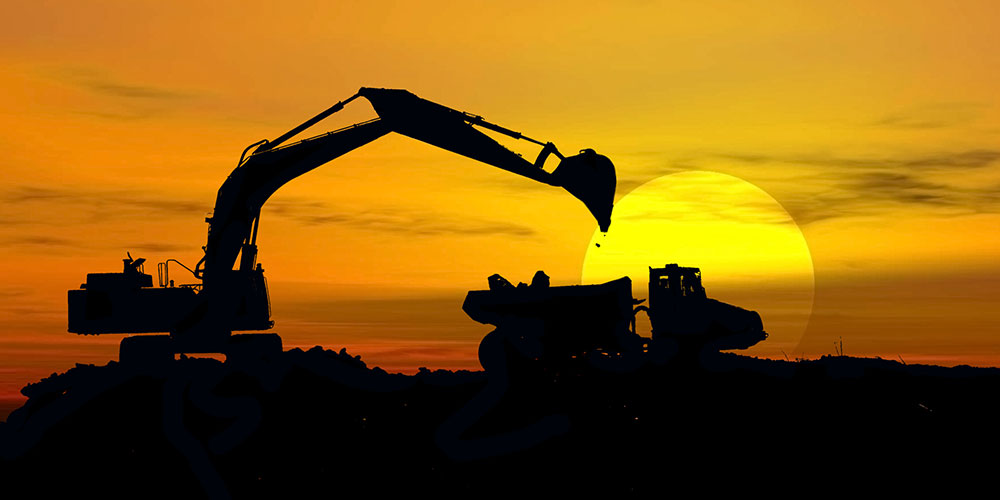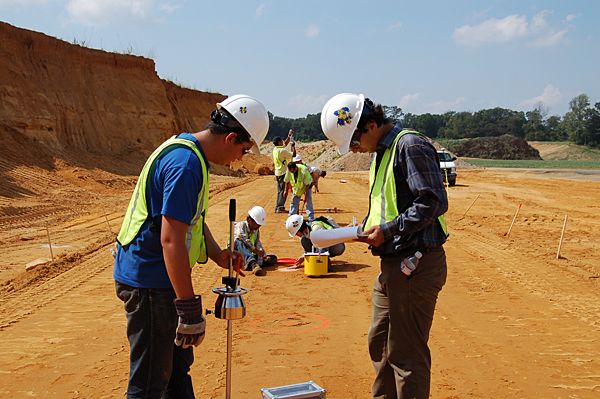Leading Consulting Civil Engineering Companies for Infrastructure Projects
Leading Consulting Civil Engineering Companies for Infrastructure Projects
Blog Article
Exactly How Consulting Engineers Enhance Geotechnical Engineering Projects: Insights Into Their Competence, Methods, and Collaborative Approaches
Consulting designers are pivotal in improving geotechnical design tasks, using their specialized knowledge to browse the intricacies of subsurface conditions. Their collective approaches foster interaction among varied project stakeholders, ultimately forming the job's trajectory.
Function of Consulting Engineers
The knowledge of getting in touch with designers in geotechnical design is basic to the effective execution of building jobs. These experts play a crucial role in evaluating soil and rock properties, which are vital elements affecting design and building and construction choices. By performing comprehensive website investigations, speaking with designers gather vital data that notifies the style procedure, guaranteeing tasks are improved stable and ideal ground.
Consulting designers likewise supply indispensable insights right into threat administration (geotechnical geologist). They identify potential geotechnical hazards, such as landslides, dirt liquefaction, and negotiation concerns, making it possible for stakeholders to carry out efficient reduction techniques. Their knowledge aids in maximizing structure styles, which can cause substantial cost savings and enhanced safety and security
In addition, getting in touch with engineers work as an important web link between task proprietors, engineers, and service providers. Their capability to convert intricate geotechnical data into workable recommendations fosters collaboration and helps with educated decision-making throughout the job lifecycle. This multidisciplinary strategy not only improves project efficiency yet also makes sure conformity with governing standards and best techniques.
Trick Approaches in Geotechnical Engineering

One main approach is website investigation, which entails conducting field tests and research laboratory analyses to gather information on subsurface problems. Techniques such as Criterion Infiltration Testing (SPT) and Cone Penetration Screening (CPT) are extensively used to review dirt stratigraphy and strength. Additionally, geophysical methods, including seismic and electric resistivity surveys, provide non-invasive ways to analyze subsurface qualities.
An additional crucial approach is numerical modeling, which allows designers to replicate different circumstances and forecast exactly how soil-structure interactions will certainly act under different loading problems. Finite Aspect Analysis (FEA) is an usual approach utilized in this context.
Moreover, the layout of foundations, keeping structures, and earthworks depends greatly on these methodologies - geotechnical geologist. By incorporating innovative logical tools with field information, speaking with engineers can develop tailored solutions that resolve particular task obstacles, inevitably adding to the security and safety and security of building and construction tasks
Value of Dirt Analysis
Soil evaluation works as a foundational element in geotechnical design, offering crucial understandings right into the physical and chemical buildings of dirt required for efficient building preparation. Recognizing soil attributes is essential for identifying its load-bearing capacity, drainage actions, and capacity for settlement or instability. Detailed dirt investigations, consisting of tasting and research laboratory testing, help identify criteria such as soil type, moisture content, density, and shear stamina.
These analyses inform the option of appropriate building methods and products, ultimately affecting project security and long life. Natural dirts may call for various structure layouts compared to granular dirts, necessitating customized engineering options. In addition, soil evaluation help in recognizing impurities that could posture risks to human health and wellness or the atmosphere, permitting for the advancement of mitigation techniques.
Incorporating soil analysis right into the onset of project development assists to decrease unpredicted challenges, making sure that engineers can anticipate and address potential issues before they intensify. By establishing a detailed understanding of the website conditions, getting in touch with engineers can optimize design effectiveness and reduce costs, thus improving the general success of geotechnical engineering jobs.
Collaborative Techniques in Projects
Effective geotechnical jobs usually pivot on collaborative strategies that combine varied proficiency from different techniques. Effective cooperation among seeking advice from designers, rock hounds, environmental researchers, and building and construction specialists is critical for addressing complex challenges and maximizing task end results. By leveraging the special abilities and understanding of each employee, projects can profit from an alternative understanding of the website problems, regulatory demands, and design restrictions.
Routine interaction and interdisciplinary meetings promote the sharing of understandings and foster a society of team effort. These joint efforts allow the identification of prospective dangers early in the task lifecycle, enabling prompt mitigation methods. Additionally, incorporating responses from stakeholders, consisting of regional neighborhoods and regulatory firms, guarantees that all point of views are thought about, improving project approval and conformity.
In addition, the assimilation of innovative innovations, such as Geographic Details Solution (GIS) and Building Info Modeling (BIM), further boosts collaboration. These tools enable the real-time sharing of data and visualization of geotechnical conditions, promoting educated decision-making. Inevitably, a collective strategy not only simplifies task implementation yet likewise lays the foundation for cutting-edge solutions to complicated geotechnical engineering challenges.
Influence On Task Results

Consulting engineers utilize innovative methods such as risk assessment and anticipating modeling, which boost the accuracy of project forecasts. Their ability to integrate innovative modern technologies, like geotechnical instrumentation and information analytics, additionally refines the style and building and construction procedures. Consequently, jobs experience boosted efficiency, lowered costs, and reduced delays.
Furthermore, fostering reliable communication and partnership among staff member improves problem-solving capabilities. When challenges emerge, a united front enables quick identification of services, avoiding possible setbacks. Eventually, the collective efforts of consulting engineers contribute to greater quality results, making certain that tasks satisfy both governing standards and customer assumptions.
Final Thought

Report this page